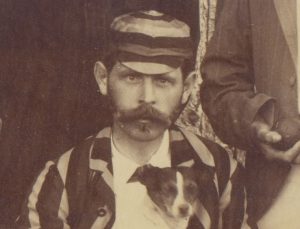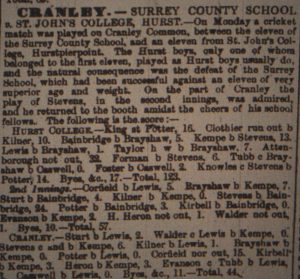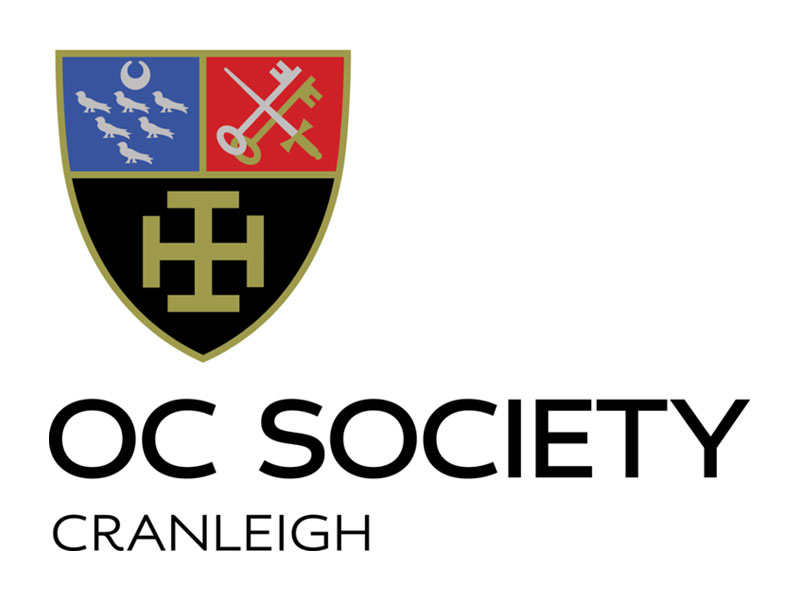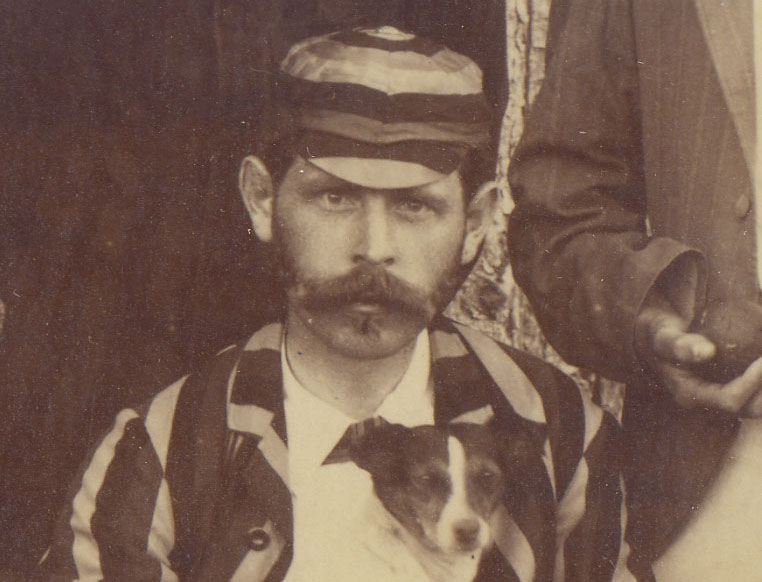
On Friday, June 8, 1866 the School played its first proper competitive match when the Village doctor, Albert Napper, raised an XI to take on the Surrey County School on the Common. Three days later, on June 11, the first inter-school game was held when a team from Hurstpierpoint came to play.
From early April, cricket had been played on the Common and rudimentary nets were erected at the bottom of the South Field to help with practice. The Common was unrecognisable from how it looks now. Around one-and-a-half acres of roughly mown ground was protected by a chain fence and used for matches. The rest was kept short by grazing sheep and cattle which were cleared when games were in progress. The pitch itself was indistinguishable from its surroundings, with wickets pitched on what the captains felt was the best part of the ‘square’ on the day. The two roads bordering the ground – Horseshoe Lane – were little more than dirt tracks across the Common. There was no pavilion – that was not built until 1882 – although a portable hut was used for players and remained throughout the summer.
There were no refreshments or even running water. Home-made ginger beer or lemonade could be bought from houses surrounding the Common but it was of dubious quality and often made boys ill. There were also a few people selling fruit and sweets, most memorably a man known as Old Sold Again who offered strawberries “at 2d a sack” and how finished every transaction by shouting “sold again”. Spectators were plentiful, many, including the Headmaster, watching from hoseback.
The players’ clothing varied and although white flannels were common, shirts were of varied colours, waistcoats often worn and normal shoes used. Players, especially older ones, often sported everyday hats. Bowling was almost exclusively round-arm (overarm deliveries were only legalised in 1864 and as late as the turn of the century round-arm bowlers were still to be seen). Equipment consisted of pads and a bat with no gloves. On uneven and rough pitches, blows to the unprotected hands and body were common.
The boys‘ coaching was supervised by William Brayshaw, a 22-year-old Cambridge graduate who had joined the staff at Easter. But Cranleigh was a young school – the average age of pupils in the first year was barely 14 – and the cricket side reflected that. The oldest player was 16, the youngest 13, with the average age 14 and a half. Few of the boys would have played cricket to any standard before arriving at the School, so it was in every regard an inexperienced side.
Napper, a stalwart of the Village club and its first chairman, brought a side raised locally. The game took place on a Friday as the Common was used by the Village on Saturdays. The poor pitches of the time meant runs were always at a premium and to general surprise the School won by ten wickets. The School secured a four-run first-innings lead and then bowled out Napper’s XI for 16, Hadji Stevens, the captain, and Walter Kilner sharing eight wickets. The Sussex Agricultural Express enthused about a win “over an opposition of superior age and weight”. In this game Brayshaw had played for the School. It was usual for two or three masters to play for the XI in all matches other than those against other schools, and this practice continued until the late 1890s

Three days later Hurstpierpoint sent over a side, and even though they were able to use the recently opened railway, they had to leave Hurst at 7.30 am to arrive in time for a midday start. Lunch, which necessitated a walk up to the School, was taken at 1.30pm and one Hurstpierpoint boy recalled that by then his team-mates were “starving after such an early start”. Realising the full Hurstpierpoint side would be too strong, they sent a young XI with only one first-team player in it. Nevertheless, they were still too good, winning by an innings after scoring 123. The newspaper noted that “the play of Stevens, who made 24, was admired and he returned to the booth amid the cheers of his school fellows”.
The School enjoyed a good season against scratch sides and until 1916 cricket was Cranleigh’s most important sport, so much so that for a few years it was played at the end of the Lent term and into the Michaelmas term; the last two matches of the 1866 season were in September.
Of the side, 14-year-old Charlie Potter, who faced the first ball against the School and was also the first boy to be caned, went on to play for Surrey while still at Cranleigh. Hubert Heron played five times for England at football and also was on the winning side in three FA Cup finals. Henry Casswell was taken on as a master when he left and went on to be the founding father of the Old Cranleighans. A superb all-round sportsman, he scored seven hundreds for the Village in 1878, a feat made all the more remarkable as he only had one arm.

